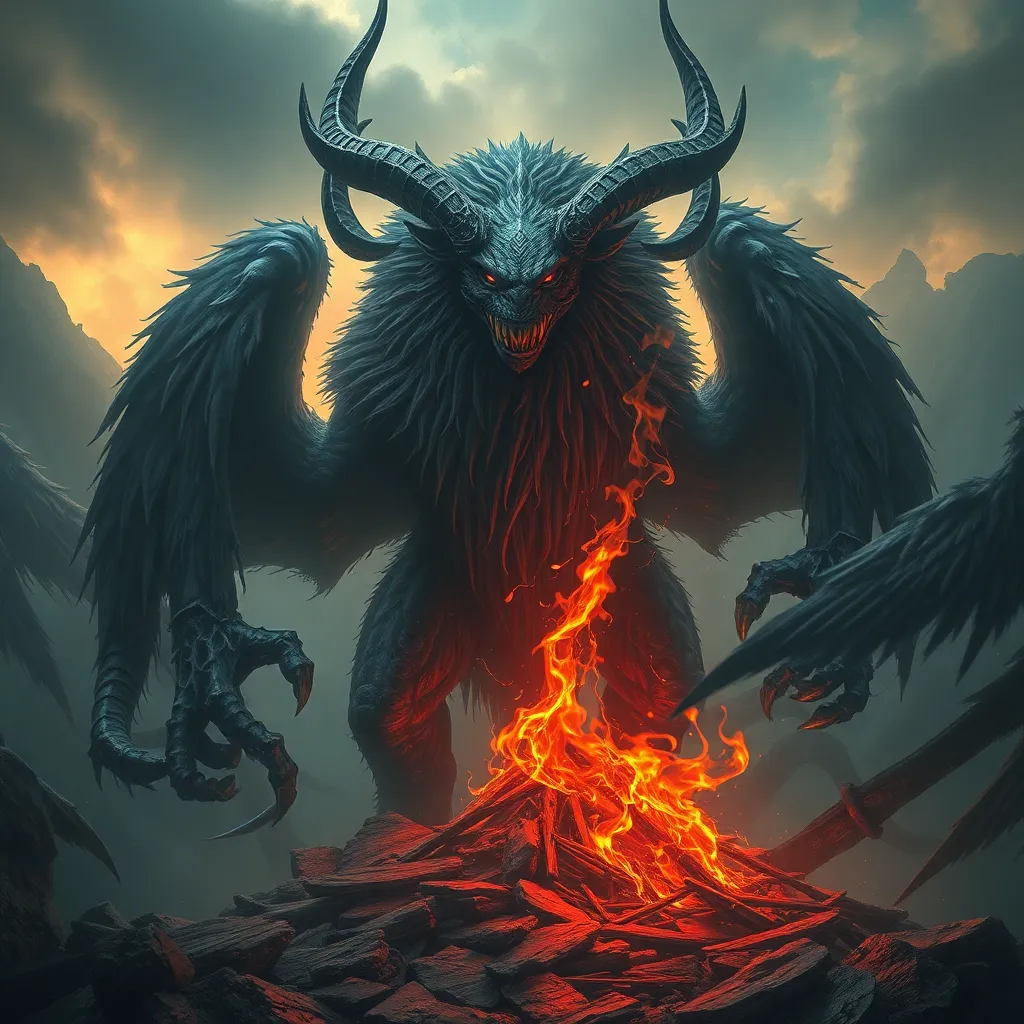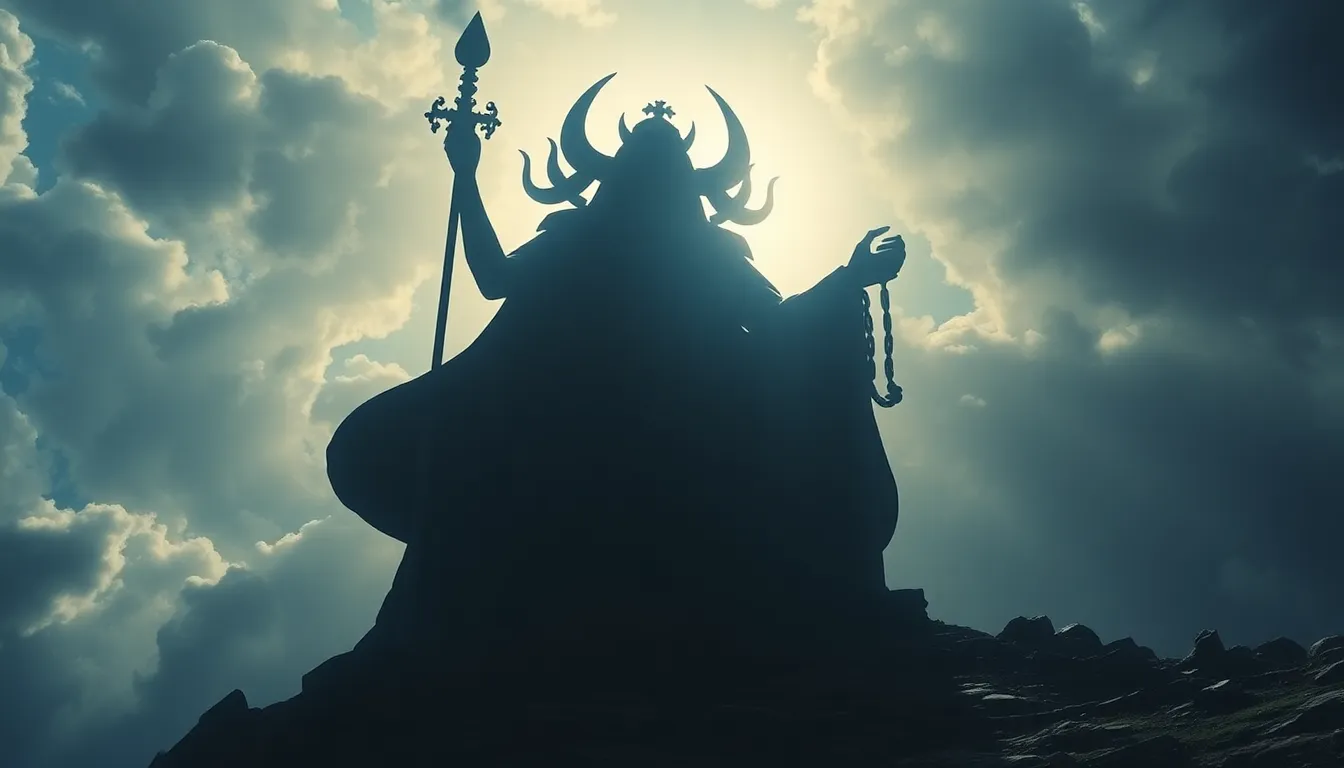A Father’s Curse: Fafnir’s Legacy in Norse Mythology
I. Introduction
Norse mythology, a rich tapestry of stories and beliefs, has captivated audiences for centuries. It offers insight into the values, fears, and hopes of the Norse people, and serves as a lens through which we can explore human nature and morality. Among the many legendary figures in this mythology is Fafnir, a complex character whose tale intertwines themes of greed, betrayal, and the powerful consequences of a father’s curse.
This article will delve into Fafnir’s transformation from a once-heroic figure to a fearsome dragon, illustrating how his legacy exemplifies the broader themes of avarice and familial treachery.
Thesis statement: Fafnir’s transformation and legacy highlight the themes of greed, betrayal, and the consequences of a father’s curse.
II. The Origins of Fafnir
Fafnir’s story begins with his lineage, connecting him to both gods and giants. He is the son of Hreidmar, a wealthy and powerful figure who plays a crucial role in Fafnir’s fate. The myth begins with a tragic sequence of events triggered by the discovery of a cursed gold hoard.
Hreidmar’s family becomes intertwined with the dwarf Andvari, who possesses a magical ring that brings great wealth but also carries a curse. This cursed gold becomes a point of contention among Hreidmar’s sons, leading to a fatal confrontation and ultimately setting Fafnir on a path of destruction.
- Fafnir’s lineage: Son of Hreidmar, connected to gods and giants.
- The cursed gold: Originating from the dwarf Andvari, it brings misfortune.
- Family betrayal: Hreidmar’s sons turn against each other over the gold.
III. The Transformation of Fafnir
As greed overtakes him, Fafnir undergoes a dramatic transformation into a dragon, a powerful symbol of avarice and death. This metamorphosis marks the culmination of Hreidmar’s curse, which corrupts Fafnir’s character and seals his fate.
The dragon serves as a representation of the insatiable desire for wealth and the destructive consequences that accompany it. Fafnir’s transformation is not merely physical; it reflects his moral decay and the isolation that greed fosters.
- Descent into greed: Fafnir becomes consumed by his lust for gold.
- Symbolism of the dragon: A representation of avarice and the inevitability of death.
- Impact of the curse: Fafnir’s character is irrevocably changed, leading to his tragic fate.
IV. The Role of Sigurd
Enter Sigurd, a heroic figure destined for glory who becomes intertwined with Fafnir’s tale. Sigurd’s quest for greatness leads him to encounter Fafnir in his dragon form, where a profound prophecy foretells his victory.
The battle between Sigurd and Fafnir is a pivotal moment, symbolizing the struggle between human virtue and the corrupting influence of greed. Sigurd’s triumph over the dragon not only marks a significant achievement in his journey but also serves as a commentary on the consequences of unchecked desire.
- Introduction to Sigurd: A hero in search of glory.
- Prophecy and battle: Sigurd’s encounter with Fafnir foretold by destiny.
- Significance of victory: Represents the triumph of virtue over greed.
V. Themes of Greed and Betrayal
The tale of Fafnir is steeped in themes of greed and betrayal, which serve as driving forces throughout the narrative. Fafnir’s insatiable desire for wealth ultimately leads to his downfall, showcasing how greed can corrupt even the noblest of beings.
Moreover, betrayal among family members, particularly involving Hreidmar and his sons, underscores the destructive impact of greed on relationships. The cyclical nature of greed is evident, as it leads not only to personal ruin but also to familial discord and tragedy.
- Greed as a driving force: Fafnir’s story exemplifies the destructive power of avarice.
- Betrayal among family: Hreidmar’s sons betray each other over cursed gold.
- Cyclical nature of greed: A path leading to destruction for all involved.
VI. The Legacy of Fafnir
Fafnir’s story extends beyond his own life, informing later Norse tales and legends. His transformation into a dragon has become an enduring symbol within Norse culture, representing not only greed but also the fear of loss and the inevitability of death.
The legacy of Fafnir influences modern interpretations of mythology, where dragons often symbolize the darker aspects of human nature and the consequences of ambition gone awry. His tale serves as a cautionary reminder of the dangers posed by greed and the importance of familial bonds.
- Influence on Norse tales: Fafnir’s legacy resonates throughout mythology.
- Enduring symbol of the dragon: Representing greed and mortality.
- Impact on modern interpretations: Fafnir’s story continues to shape narratives in contemporary storytelling.
VII. Comparative Analysis
Fafnir’s tale shares similarities with other mythological stories, such as the quest for the Golden Fleece and the dragon encountered in Beowulf. These narratives often explore similar themes of curses, transformation, and the consequences of human desires.
Insights into these universal themes reveal how cultures worldwide grapple with the concepts of greed and moral decay. The relevance of these themes persists in contemporary storytelling, where characters often face the repercussions of their actions, echoing the lessons learned from Fafnir’s fate.
- Similarities with other myths: Connections to the Golden Fleece and Beowulf.
- Universal themes: Exploration of curses and transformation across cultures.
- Contemporary relevance: Lessons from Fafnir’s tale resonate in modern narratives.
VIII. Conclusion
In summary, Fafnir’s story is a profound narrative that delves into the nature of greed, betrayal, and the enduring consequences of a father’s curse. Through his tragic transformation and ultimate downfall, we gain insight into the moral implications of unchecked desire and familial discord.
Reflecting on the nature of curses, we see how they can shape legacies, leaving lasting impacts on both individuals and their families. Fafnir’s tale serves as a timeless reminder of the complexities of human nature and the moral lessons that continue to resonate through the ages.
Ultimately, Fafnir’s legacy invites us to reflect on our own desires and the potential consequences that may arise from our actions, making his story as relevant today as it was in ancient times.




